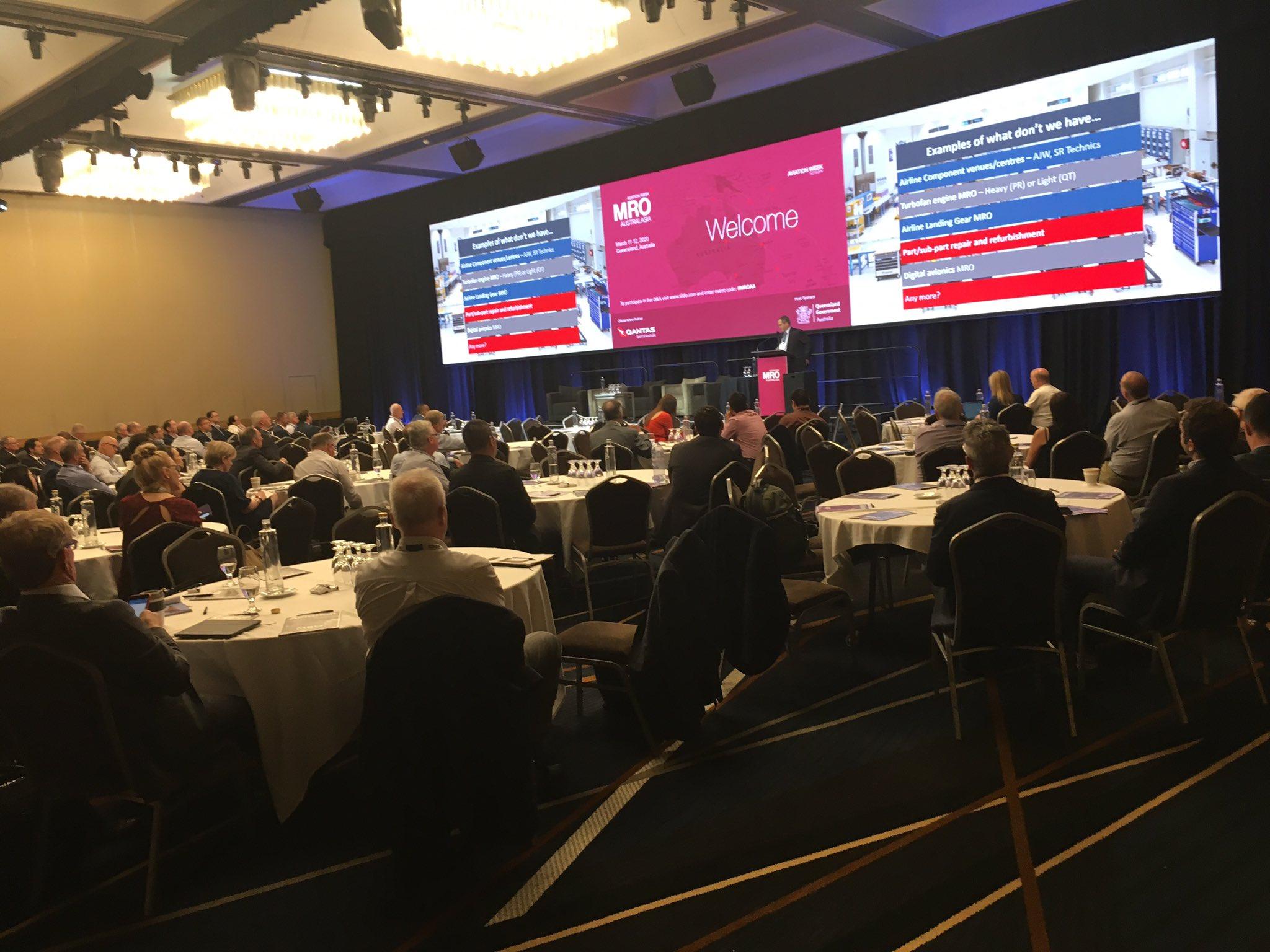
BRISBANE—While Australia’s MRO industry has contracted from its peak, there are a range of strategies that could help restore its competitiveness, according to an aerospace executive.
Australia historically had “quite an extensive MRO industry” including multiple sites around the country performing airframe and engine heavy maintenance for airlines, TAE Aerospace CEO Andrew Sanderson said during the Aviation Week MRO Australasia conference Mar. 12.
However, this business declined in Australia during recent decades, with more heavy maintenance sent overseas and many facilities closed. Now about half of the more than 400 commercial aircraft in Australia have heavy checks performed overseas, and almost no turbofan heavy maintenance is done in the country. Australia is ranked in the top 20 for GDP, but there are no Australian companies in the top 100 largest global aerospace companies, Sanderson said.
There were multiple reasons for the decrease, Sanderson said, including reduced labor cost competitiveness, the rapid growth of the Asian MRO industry, and scale disadvantages. The emergence of Australian LCCs was also a factor, as they outsourced their heavy maintenance overseas. New avionics technology and aircraft types would have meant costly upgrades to maintenance capabilities.
One way to strengthen the Australian MRO sector would be to focus on types of work where labor comprises a smaller proportion of total cost, Sanderson said. Engine heavy maintenance is one such area. While airframe maintenance costs are heavily weighted in favor of labor rather than parts, the ratio for engine work is essentially reversed. Landing gear heavy maintenance also has a higher parts cost ratio.
By boosting this type of work Australia could leverage its skilled workforce, Sanderson said. It also makes labor cost competitiveness less of an issue. However, expanding in these areas requires a lot of capital investment.
The pace of growth in the Asian airline sector could mean that region’s MRO providers may not meet all the demand. More work could be brought to Australia if it has the infrastructure to support it, Sanderson said.
Australian companies and state governments need to be better at collaborating, Sanderson said. The states are competing against each other to gain a larger share of the MRO industry, but there should be a more national approach in many areas, he added.
Increasing the amount of defense MRO can be a good strategy, and has been successful for TAE, Sanderson said. Australia generally prefers to keep defense maintenance in the country. Picking up more defense work allows MRO companies to diversify and help protect their business if there is a downturn in commercial.





